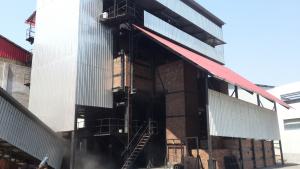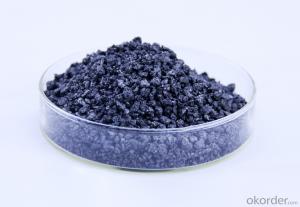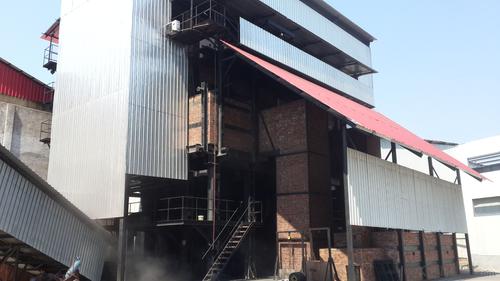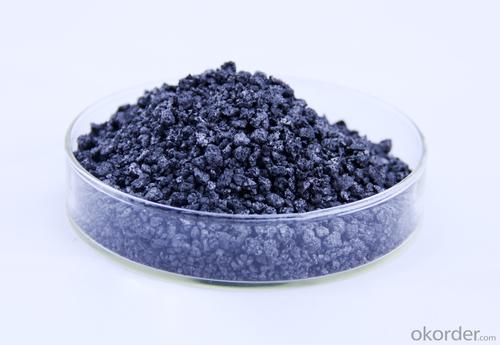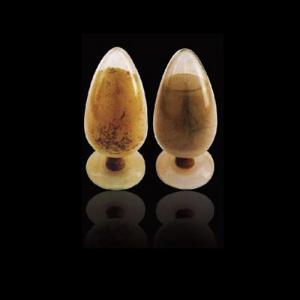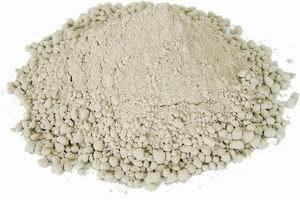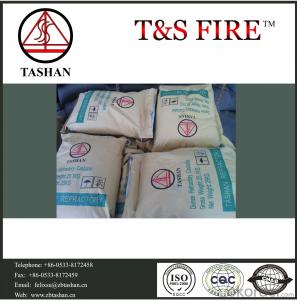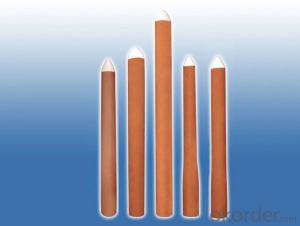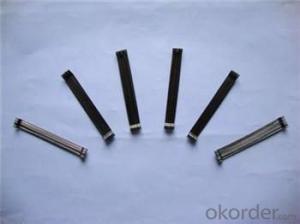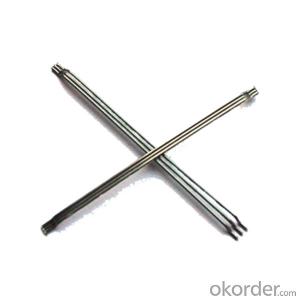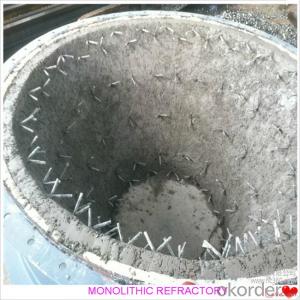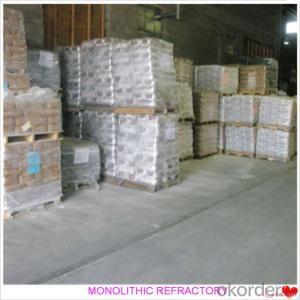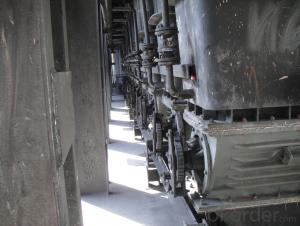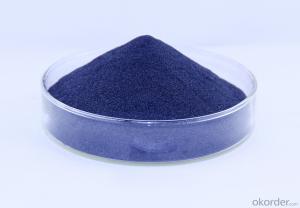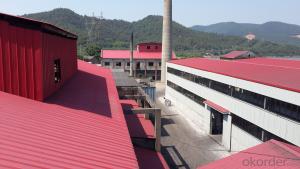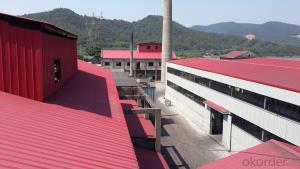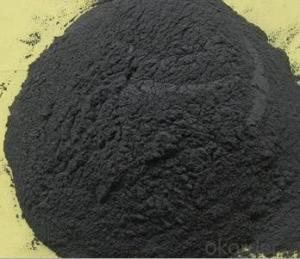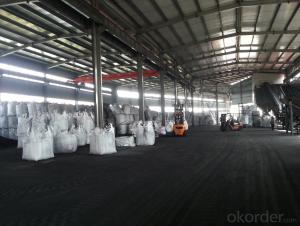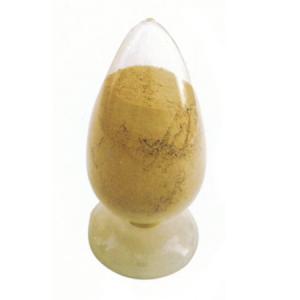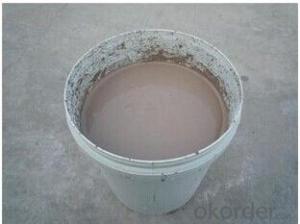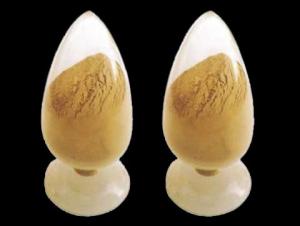Monolithic Refractories for Iron and Steel Industry - Coaly Carbon Additive with Good Quantity
- Loading Port:
- China main port
- Payment Terms:
- TT or LC
- Min Order Qty:
- 20 m.t
- Supply Capability:
- 1000 m.t/month
OKorder Service Pledge
OKorder Financial Service
You Might Also Like
Packaging & Delivery
| Packaging Details: | 25kg paper bag into 1t weaving bag 5kg, 10kg and 20kg weaving bag into 1t weaving bag 25kg weaving bag put on pallet covered with entanglement wrap product direct into packing bag 25kg paper bag put on pallet covered with entanglement Wrap 25kg weaving bag into 1t weaving bag |
| Delivery Detail: | depend on the quantity |
<STYLE type=text/css>.richtext [data-maya] { width: 750px; }
sell carbon additive /Calcined petroleum coke/Graphite petroleum coke
stable quality
carburizer for special steel and ductile iron
high carbon, low sulphur
sell carbon additive
stable quality
used as carburizer for special steel and ductile iron
high carbon, low sulphur
quick delivery
Specifications:
Carbon Additive Graphitized Petroleum Coke Artificial Graphite Scrape Carburizer | F.C (Min) | 99% | 98.5% | 98% |
S (Max) | 0.05% | 0.05% | 0.05% | |
ASH (Max) | 0.5% | 0.80% | 1% | |
V.M(Max) | 0.5% | 0.70% | 1% | |
H2O(Max) | 0.5% | 0.50% | 0.5% | |
Size: | 0.3-5mm,0.5-5mm,1-5mm,3-8mm,ect. | |||
GPC is also called artificial graphite scraps, characterized by high carbon, low sulphur, low nitrogen, causing less slag in the furnace. The finished steel and iron have a better quality by using GPC.
Calcined Petroleum Coke
FC:98.5%min,
S:0.5%max
A:0.8%max
V:0.7%max
Mositure:0.5%max
Size:1-5mm
This product is mainly used in steel-making and foundry. Calcined Petroleum Coke
Calcined Petroleum Coke comes from delayed coke which extracted from oil refinery. Although Calcined Petroleum Coke contains a little bit higher level of sulfur and nitrogen than pitch coke, the price advantage still makes it widely used during steel-making and founding as a kind of carbon additive/carburant.
Technology:
Laborary Equpment
In our lab,we has a high precision balance,mullfe furnace,sample making machine, dring box,sulfur measurement instrument and other calibratiing equipments.As a result,before deliverung to our customers,our products have to pass a strict test to ensure the quality and components.The testing reports will be sent to our customers to confirm untill they satisfy with it.
Packaging & Delivery
Packaging Detail:25kg paper bag into 1t weaving bag 5kg, 10kg and 20kg weaving bag into 1t weaving bag 25kg weaving bag put on pallet covered with entanglement wrap product direct into packing bag 25kg paper bag put on pallet covered with entanglement Wrap 25kg weaving bag into 1t weaving bag.
Delivery Details: 7 days
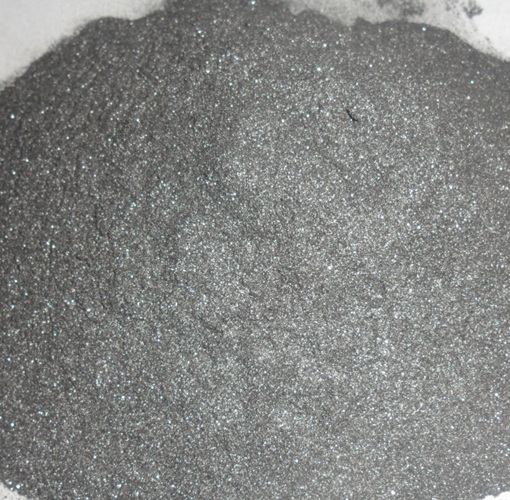
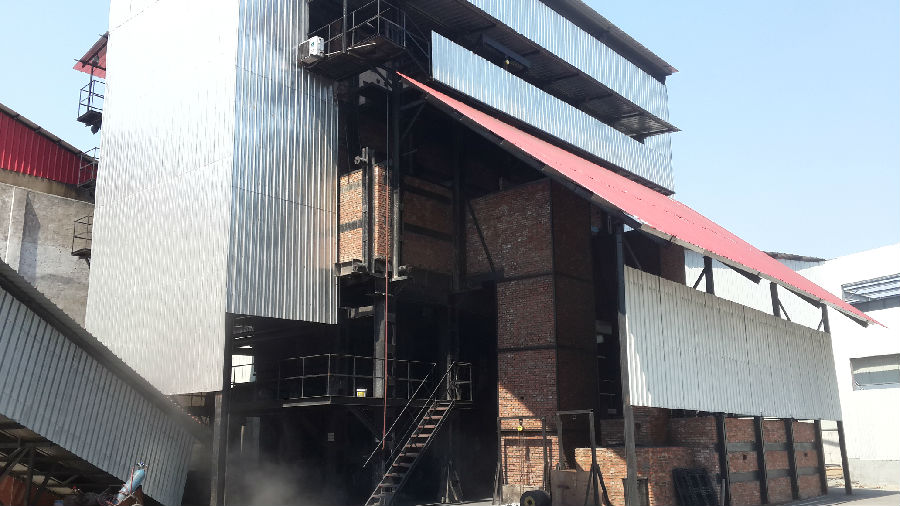
- Q: What are the key trends in the use of monolithic refractories in the iron and steel industry?
- One key trend in the use of monolithic refractories in the iron and steel industry is the increasing demand for tailored solutions. As the industry continues to evolve and become more specialized, there is a growing need for refractory materials that can be customized to meet specific requirements and challenges. Another important trend is the development of advanced monolithic refractories with enhanced performance characteristics. Manufacturers are constantly working on improving the properties of these materials, such as higher resistance to thermal shock, better thermal conductivity, and increased durability. This allows for improved efficiency and productivity in the iron and steel production processes. Additionally, there is a shift towards environmentally friendly refractory solutions. With growing concerns over sustainability and emissions, the industry is looking for refractory materials that have a lower carbon footprint and are made from renewable or recycled materials. This trend aligns with the broader push towards greener practices in the iron and steel sector. Overall, the key trends in the use of monolithic refractories in the iron and steel industry revolve around customization, performance enhancement, and sustainability. These trends are driven by the evolving needs of the industry and the desire to optimize production processes while minimizing environmental impact.
- Q: How do monolithic refractories help in reducing energy consumption in iron and steel production?
- Monolithic refractories play a vital role in the reduction of energy consumption in iron and steel production. These refractories are heat-resistant materials utilized to line the walls and floors of furnaces and other high-temperature equipment. One of the main ways monolithic refractories aid in energy reduction is through their exceptional thermal insulation properties. These materials possess low thermal conductivity, which effectively minimizes heat loss from the furnace or equipment. By keeping heat loss to a minimum, monolithic refractories help maintain a consistent and high temperature inside the furnace, resulting in enhanced energy efficiency. This allows for better utilization of generated heat, reducing the need for additional energy input and ultimately leading to energy savings. Additionally, monolithic refractories exhibit high thermal stability and resistance to thermal shock. This enables them to withstand the extreme temperatures and rapid temperature changes frequently encountered in iron and steel production processes. By having a robust and dependable lining, these refractories prevent heat leakage and ensure efficient heat transfer to desired areas, reducing energy wastage. Furthermore, monolithic refractories contribute to energy reduction by resisting chemical attack and erosion. In iron and steel production, furnaces and equipment linings are exposed to aggressive substances like molten metal, slag, and gases. Monolithic refractories exhibit excellent resistance to these corrosive elements, prolonging their lifespan and reducing the need for frequent repairs or replacements. This not only saves energy required for maintenance but also avoids production interruptions and associated energy losses. In conclusion, monolithic refractories aid in the reduction of energy consumption in iron and steel production by providing effective thermal insulation, withstanding extreme temperatures, and resisting chemical attack. By optimizing heat management and extending equipment durability, these refractories significantly contribute to energy efficiency and cost savings in the industry.
- Q: What are the advantages of using castables in the iron and steel industry?
- Using castables in the iron and steel industry offers several benefits. Firstly, castables have superb thermal insulation properties, which effectively maintain the temperature of the molten metal. This prevents heat loss and ensures efficient energy usage, resulting in cost savings. Additionally, castables exhibit exceptional refractory strength, enabling them to withstand extreme temperatures and harsh operating conditions. This durability prolongs the lifespan of the refractory lining, reducing the need for frequent repairs or replacements. Castables also offer versatility as they can be easily molded into various shapes and sizes, making them highly adaptable for different applications in the iron and steel industry. This flexibility allows for customization in designing the refractory lining to meet specific requirements. Furthermore, castables can be installed quickly and effortlessly, minimizing downtime during installation or maintenance. Their monolithic lining capability eliminates the need for individual bricks or tiles, saving time and effort. Castables are also resistant to chemical attacks from molten metal, slag, and other corrosive substances commonly encountered in the iron and steel industry. This ensures the integrity of the refractory lining and prevents contamination of the metal being processed. Moreover, castables typically require fewer raw materials compared to traditional refractory bricks or tiles, leading to cost savings in terms of material procurement, transportation, and storage. This makes castables a cost-effective solution. Lastly, the use of castables in the iron and steel industry enhances production efficiency by providing a smooth and uniform lining. This facilitates improved heat transfer, metal flow, and reduced downtime, ultimately increasing overall productivity. In conclusion, the advantages of using castables in the iron and steel industry encompass excellent thermal insulation, high refractory strength, versatility, easy installation, resistance to chemical attack, reduced material costs, and enhanced production efficiency. These benefits establish castables as the preferred choice for lining furnaces, ladles, tundishes, and other equipment in the iron and steel manufacturing process.
- Q: What are the challenges in recycling and disposing of monolithic refractories?
- One challenge in recycling and disposing of monolithic refractories is the high temperature resistance and durability of these materials, which makes them difficult to break down and recycle. Additionally, the presence of various contaminants, such as metals and other impurities, can further complicate the recycling process. Proper disposal of monolithic refractories also poses challenges due to the potential environmental impact of disposing of these materials, as they may contain hazardous substances. Therefore, finding efficient and environmentally-friendly methods for recycling and disposing of monolithic refractories remains a challenge in the industry.
- Q: What are the key properties of ramming mixes used for monolithic refractory installations?
- The key properties of ramming mixes used for monolithic refractory installations are: 1. High thermal stability: Ramming mixes should possess high thermal stability to withstand the extreme temperatures and thermal cycling in refractory applications. This property ensures that the ramming mix remains intact and does not undergo significant structural changes under varying thermal conditions. 2. High density: Ramming mixes need to have a high density to provide good resistance against thermal conductivity. This property helps in minimizing heat loss and maintaining the desired temperature in the refractory lining. 3. Low porosity: Low porosity is essential for ramming mixes as it helps in reducing the penetration of molten metals or slag into the refractory lining. This property enhances the overall durability and longevity of the refractory installation. 4. Good mechanical strength: Ramming mixes should possess good mechanical strength to withstand the stresses and loads encountered during installation, as well as during the operation of the refractory lining. This property ensures that the ramming mix can resist any physical or mechanical damage, such as cracking or spalling. 5. Chemical resistance: Ramming mixes should exhibit excellent resistance to chemical attack from molten metals, slag, or corrosive gases. This property is crucial for protecting the refractory lining from chemical reactions and degradation, which can compromise its performance and lifespan. 6. Easy installation and workability: Ramming mixes should have good workability, allowing for easy installation and compaction. This property ensures that the mix can be easily shaped and rammed into place without excessive effort or time, facilitating efficient and effective refractory installations. 7. Controlled setting time: Ramming mixes should have a controlled setting time to allow sufficient time for proper placement and consolidation. This property ensures that the mix remains workable during installation but sets and hardens within a reasonable time frame, allowing for timely completion of the refractory lining. In summary, the key properties of ramming mixes used for monolithic refractory installations include high thermal stability, high density, low porosity, good mechanical strength, chemical resistance, easy installation and workability, and controlled setting time. These properties collectively contribute to the overall performance, durability, and longevity of the refractory lining in various high-temperature applications.
- Q: What are the factors influencing the choice of monolithic refractories for different furnace types?
- The choice of monolithic refractories for different furnace types is influenced by various factors that need to be considered in order to ensure optimal performance and efficiency. These factors include the operating temperature, type of heat transfer mechanism, chemical composition of the furnace atmosphere, thermal cycling, mechanical stresses, and specific application requirements. One of the primary factors to consider is the operating temperature of the furnace. Different monolithic refractories have different temperature limits, and it is crucial to select a refractory material that can withstand the specific temperature range of the furnace without significant degradation or failure. For high-temperature applications, materials like alumina, magnesia, and silica are commonly used due to their excellent thermal stability. The type of heat transfer mechanism is another important consideration. Furnaces can use various methods to transfer heat, such as radiation, conduction, or convection. Each of these mechanisms may require different refractory properties. For example, radiation-dominated furnaces may require a refractory material with high thermal conductivity to efficiently transfer heat, while convection-dominated furnaces may require a material with good resistance to gas flow erosion. The chemical composition of the furnace atmosphere is also a crucial factor. Depending on the process being carried out in the furnace, the atmosphere may contain highly corrosive gases or chemicals. In such cases, it is essential to select a monolithic refractory that is resistant to chemical attack and can maintain its structural integrity in the presence of aggressive substances. Thermal cycling, which involves repeated heating and cooling cycles, is another factor influencing the choice of monolithic refractories. Some refractory materials may be prone to thermal shock or spalling when subjected to rapid temperature changes. In contrast, others may have better resistance to thermal cycling, making them more suitable for applications that involve frequent temperature variations. Mechanical stresses, such as load or vibration, can also impact the choice of refractories. Furnaces that experience mechanical stresses require materials with good mechanical strength and resistance to abrasion. Refractory materials like silicon carbide or zirconia may be preferred in such cases due to their high strength and toughness. Lastly, specific application requirements should be considered when selecting monolithic refractories. Factors such as installation method, ease of maintenance, availability, and cost-effectiveness may influence the choice of refractory material. In summary, the choice of monolithic refractories for different furnace types is influenced by the operating temperature, heat transfer mechanism, chemical composition of the furnace atmosphere, thermal cycling, mechanical stresses, and specific application requirements. Considering these factors is essential to ensure the longevity, performance, and efficiency of the refractory lining in various furnace applications.
- Q: How do monolithic refractories improve the efficiency of ladle and tundish purging furnaces?
- Monolithic refractories improve the efficiency of ladle and tundish purging furnaces by providing better insulation, reducing heat loss, and enhancing the overall thermal efficiency of the furnaces. These refractories have high thermal conductivity and low thermal expansion, allowing for better heat transfer and uniform temperature distribution. Additionally, their superior resistance to thermal shocks and chemical attacks prolongs the lifespan of the furnaces, reducing maintenance and downtime.
- Q: What are the common challenges faced by monolithic refractories in the iron and steel industry?
- Monolithic refractories play a crucial role in the iron and steel industry, where they are extensively used in various applications such as lining furnaces, ladles, and tundishes. However, these materials also face several common challenges in this industry. One of the major challenges is thermal shock. Monolithic refractories are exposed to extreme temperature variations, particularly during the start-up and shut-down phases of the production process. The rapid heating and cooling cycles can cause thermal stress, leading to cracking and spalling. To combat this challenge, refractory manufacturers develop high-quality monolithic materials with enhanced thermal shock resistance. Another significant challenge is corrosion. The iron and steel industry involves the use of various aggressive materials such as molten metal, slag, and gases, which can chemically attack the refractory lining. This corrosion can lead to material degradation, erosion, and reduced service life. To address this issue, specialized monolithic refractories with excellent corrosion resistance are employed, often containing additives that can withstand the corrosive environment. Abrasion is also a common challenge faced by monolithic refractories in the iron and steel industry. The movement of raw materials, molten metal, and slag can cause mechanical wear on the refractory lining, resulting in loss of material and compromised performance. Refractory manufacturers develop abrasion-resistant monolithic materials that can withstand the intense wear and tear, ensuring prolonged service life. Furthermore, the iron and steel industry often requires refractories with good thermal conductivity. This is crucial to efficiently transfer heat and maintain optimal operating conditions. Achieving the right balance between thermal conductivity and mechanical strength can be challenging, as refractories with high thermal conductivity often exhibit lower mechanical strength. Therefore, selecting the appropriate monolithic refractory with the desired thermal conductivity properties is crucial for achieving optimal performance. Lastly, monolithic refractories also face challenges related to installation and maintenance. Due to their liquid or semi-liquid nature, the application of monolithic refractories requires skilled personnel and careful installation techniques. Moreover, periodic maintenance and repair are essential to ensure the longevity and performance of the refractory lining. Regular inspections, repairs, and proper curing techniques are necessary to mitigate these challenges and optimize the refractory's performance. In conclusion, monolithic refractories in the iron and steel industry face challenges such as thermal shock, corrosion, abrasion, thermal conductivity, and installation/maintenance. Addressing these challenges through the development of specialized refractory materials and employing proper installation and maintenance techniques is crucial for ensuring efficient and reliable performance in this demanding industry.
- Q: What are the specific requirements of monolithic refractories for soaking pit applications?
- Monolithic refractories used in soaking pit applications need to possess certain specific requirements. They should be able to withstand high temperatures, typically above 1500°C, without losing their structural integrity. They should also exhibit excellent thermal shock resistance to withstand rapid temperature fluctuations during the heating and cooling cycles. Additionally, they must have good resistance to chemical erosion from molten metals and slag present in the soaking pit. Other desirable properties include low porosity, high density, and good mechanical strength to ensure long-term durability and resistance to wear and tear.
- Q: What are the key properties of pumpable refractories used for monolithic refractory applications?
- The key properties of pumpable refractories used for monolithic refractory applications include high flowability, good workability, excellent bonding strength, and high resistance to thermal shock. These pumpable refractories should also possess good pumpability and be able to withstand the intense heat and mechanical stress in the application environment. Additionally, they should have low water demand, high chemical resistance, and the ability to maintain their properties even after exposure to high temperatures.
Send your message to us
Monolithic Refractories for Iron and Steel Industry - Coaly Carbon Additive with Good Quantity
- Loading Port:
- China main port
- Payment Terms:
- TT or LC
- Min Order Qty:
- 20 m.t
- Supply Capability:
- 1000 m.t/month
OKorder Service Pledge
OKorder Financial Service
Similar products
Hot products
Hot Searches
Related keywords
